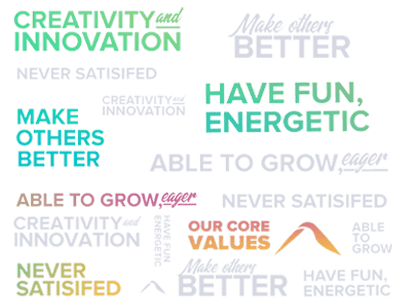Introduction
Amidst the rising debt, Utility providers are constantly encountering increasing pressure to enhance customer experience. In such a situation AI is transforming both first- and third-party collections. Predictive risk scoring, hyper-personalized communication, and automated self-service tools are some of the features that are facilitated by AI for the first-party teams. These features improve engagement and decrease delinquency.
However, intelligent segmentation, regulatory compliance, and recovery rates are boosted in third-party collections with the assistance of AI. These components of AI deliver a seamless, intelligent collections setup that is highly effective, ethical, and customer-centric.
AI in First-Party Collections (In-House)
- Predictive analytics
- Tailored communications
- AI-powered chatbots and virtual assistants
- Engaged payment plans
- Operational efficiency
AI in Third-Party Collections (Outsourced)
- Intelligent account segmentation
- Compliance monitoring tools
- Voice and sentiment analytics
- Performance dashboards
- More heightened recovery rates
Introduction
At present, the digitally webbed world is moved more by the power of Artificial Intelligence AI than gas, water, or electricity. While the relevance of AI on customer experience, operations, and maintenance is quite visible. However, Collections-both first-party (internal) and third-party (outsourced) is the part where AI is redrafting the rules. Conventionally, collections are considered unemotional, inflexible, and reactive; now, they are transforming into more intelligent, Customer-focused, and effective.
The Collections Challenge in Utilities
A constant harmonizing effort is being done by the Utility companies to maintain a steady cash flow, continuity of service, and at the same time, uphold positive customer relationships. Inflation is increasing, there is economic uncertainty, and regulatory pressures are mounting; the collection departments are under pressure.
In such a scenario, a significant challenge in the utility sector is collections. According to First Source’s data in the article- Rethinking Debt Collection in the Utilities Sector, UK households owe £3.7 billion in unpaid energy bills and over £2 billion in water arrears.
Customarily, the collection method has relied on:
- Manual risk separation
- Scripted outbound calls
- Letters and mass emails
- Slight to no personalization
- Large operational costs
- Risk of Reputation and Compliance
As a result, customer experience suffers, and collection rates deteriorate.
However, this narrative is being overturned by AI. With the use of predictive analytics, intelligent automation, and natural language processing, the utility sector is transforming its approach from a recovery model to a predict-and-prevent model.
First-Party Collections: In-House, Supercharged by AI
1. Predictive Analytics: Addressing Risk Before It Escalates
A considerable amount of data that includes payment history, regular usage tendencies, and revenue demographics is analysed by the AI-powered models. Additionally, peripheral economic indicators to identify the risk level of every account are also found.
This enables companies to
- Proactively contact high-risk customers
- Tailored payment plans
- Decrease service disconnections
- Evade expensive escalations to third-party agencies
As per TransUnion’s research- More Than Half of Debt Collection Companies Saw Increased Volume of Accounts in Past 12 Months– in 2024, 18% of debt collectors invest in AI/ML. And also, substantial investments in technology are made by 52% of debt collection agencies to
- agent productivity,
- enhance margins and
- more efficiently supervise compliance risks.
2. Hyper-Personalized Communications
The utility companies now dump the common payment reminders. With AI-driven Natural Language Processing (NLP), bespoke messages based on consumers’ behaviour patterns and preferred channels are being delivered.
- A young professional might receive an amicable SMS notification
- A senior citizen might receive a humble email that also includes step-by-step instructions.
As per a new study by The Kaplan Group, The AI-Driven Transformation of Global Debt Collection, personalization has led to 25% increase in recovery rate
The outcome? Advanced engagement. Lesser friction. Quicker payments.
3. 24/7 AI Chatbots and Virtual Assistants
Now you don’t need to wait until Monday morning to get your billing issues resolved late on Sunday night. That AI-powered virtual agents are in service.
In 2024, debt collection companies using a self-service online portal for consumers reached 88%.
- Instantaneous replies to billing enquiries
- On-demand payment plan arrangement
- Protected payment processing
- Conversational assistance in several languages
4. Dynamic Instalment Plans
AI creates repayment possibilities based on a customer’s economic profile and behaviour rather than offering inflexible payment plans. The choice and flexibility enhance the repayment chances and decrease defaults.
Third-Party Collections: Smarter, Not Harsher
Third-party collection agencies come into play when the first party submits its arms. It is usually motivated merely by targets rather than human emotions or connection building; however, AI is revolutionising this also.
1. AI-Driven Account Prioritization
With the assistance of AI, agencies are enabled to bifurcate accounts on the basis of payment potential and behaviour so that resources allocated for recovery can be reasonable. The accounts with high chances of repayment are addressed with automated outreach, whereas human agents are assigned for intricate cases.
According to a Fast Company’s article Oh great, now debt collectors are embracing AI too, 11% of debt collection companies use AI in their tasks.
2. Ethical, Compliant Contact
With the existence of stringent consumer rights regulations (think GDPR, FDCPA, etc.), ensuring compliance becomes vital, and AI plays a crucial role. With the monitoring of calls in real-time, supervisors are notified of probable violations before they become lawsuits.
PewTrusts’artricle, Debt Collection Cases Continued to Dominate Civil Dockets During Pandemic, the percentage of civil lawsuits related to debt has risen to 42%.
3. Sentiment & Speech Analysis
Speeches are transcribed and analysed for understanding tone, sentiment, and emotions. These analyses deliver feedback that can be implemented for agent training and customer interactions.
The Future: A Seamless First-Third Party Continuum
AI is creating a bridge between the efforts of first and third parties. With the exchange of visions, approaches, and customers’ perspective, both sides can function in concord
- Improved consistent customer experience
- Advanced recovery rates crossways
- Enhanced compliance and transparency
What’s Next? Final thoughts
As per Market.us data in the report AI for Debt Collection Market Soar to USD 15.9 Billion By 2034– The AI debt collection market is anticipated to grow at a CAGR of 16.9%, reaching $15.9 billion by 2034 from $3.34 in 2024.
It won’t be wrong if we say that now AI is powering the utilities. AI is essentially helping utilities with more brilliant collection and faster resolution with the blend of data, empathy, strategy, and automation.
In this era of economic instability and change in customer behaviour patterns, adoption of AI enables an agency to keep debt recovery strategies on track. Also, debt recovery practices turn more ethical and customer-centric when blended with predictive analytics.
Frequently Asked Questions About AI in Utility Debt Collections
1. How does AI enhance first-party (in-house) collections?
AI improves in-house collections by:
- Utilizing predictive analytics to identify high-risk accounts early
- Enabling tailored communication strategies for each customer
- Implementing AI-powered chatbots and virtual assistants for efficient customer interactions
- Offering personalized payment plans to increase collection rates
- Streamlining operations to reduce costs and improve efficiency
2. What role does AI play in third-party (outsourced) collections?
In outsourced collections, AI contributes by:
- Segmenting accounts intelligently to prioritize collections efforts
- Monitoring compliance with regulatory standards in real-time
- Analyzing voice and sentiment data to assess customer emotions and responses
- Providing performance dashboards for better decision-making
- Enhancing recovery rates through data-driven strategies
3. How does AI shift the approach from reactive to proactive collections?
AI enables a proactive collections model by:
- Predicting potential delinquencies based on customer data and behavior
- Allowing utility providers to engage customers before issues escalate
- Reducing the need for reactive measures like service disconnections
- Improving customer relationships through timely and personalized outreach
4. What are the benefits of integrating AI into utility debt collection processes?
Integrating AI offers several advantages:
- Increased operational efficiency and reduced costs
- Enhanced customer experience through personalized interactions
- Improved compliance with regulatory requirements
- Higher collection rates and reduced delinquency
- Ability to scale operations without a proportional increase in resources




